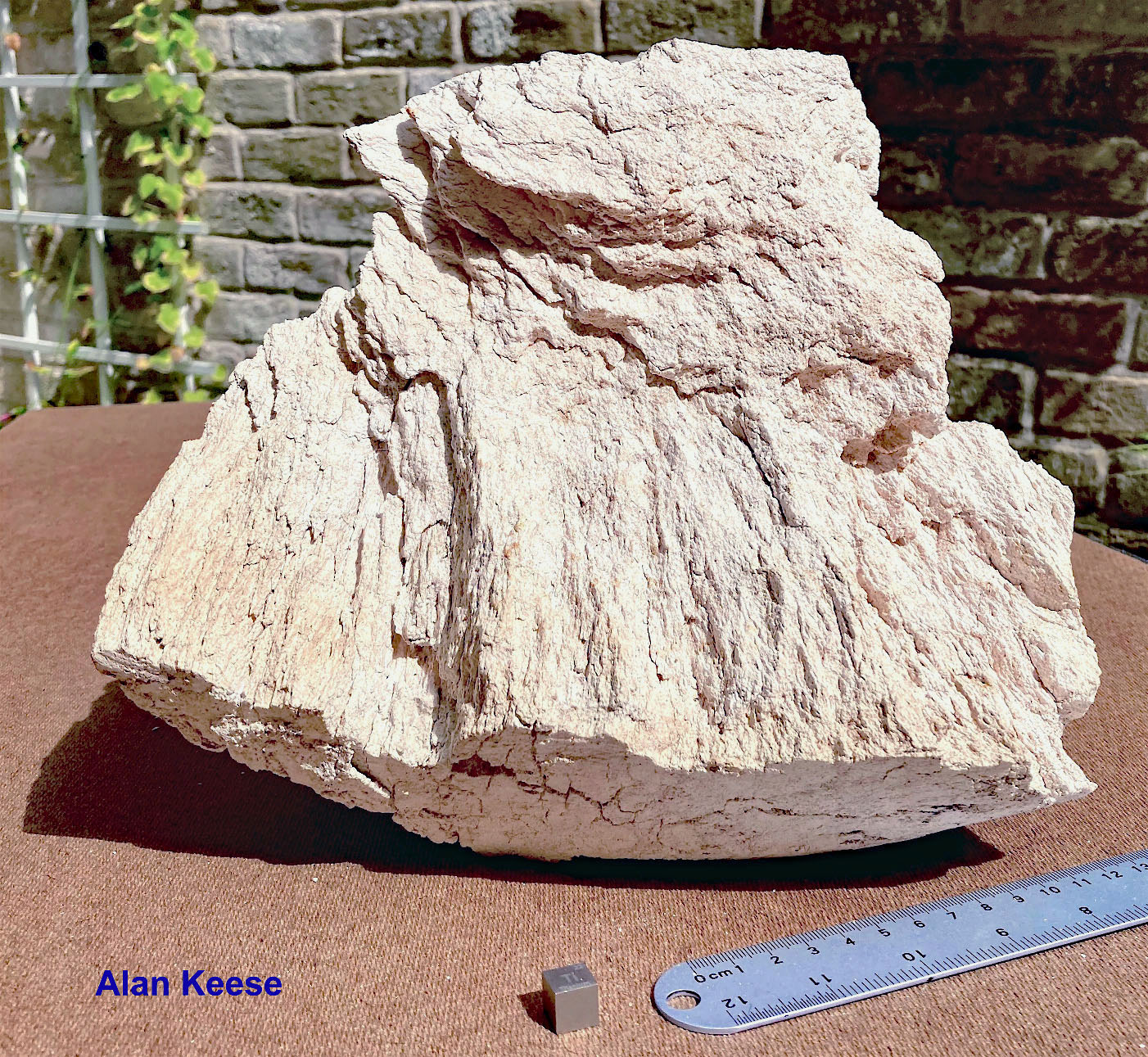|
Roll Overs:
1
2
3
4
5
6
7
8
|

|
|
Copyright (c) IMPACTIKA.com.
|
Impactite
  
Anne writes:
The following notes written by Alan Keese.
Pictured is an impactite sample found at the Wabar site in the Ar Rub' al-Khali desert of Saudi Arabia. The slab-shaped, 3.8-kilogram specimen lay approximately 150 meters east of the 116-Meter Crater (AKA Philby "B" Crater) rim. It is slightly curved with a concave, arbitrarily designated "front" (Photo 1) and convex back (Photo 2). Photo 3 shows the bottom and Photo 4 the top.
The Wabar site resulted from the nineteenth century impact of a Type IIIA octahedrite asteroid weighing at least 3,500 tons. Before impact it broke into four or more major pieces, the largest estimated at 8.0 to 9.5 meters across. This information comes from a comprehensive article authored by Jeffrey Wynn and Eugene Shoemaker (November 1998 Scientific American). At least three craters resulted, with diameters of 116, 64, and 11 meters.
A sand volume estimated at 27 meters in diameter was flash melted into black glass during the impact. Beyond that the expanding shock wave welded individual sand grains together, transforming them into the mineral called "impactite". Tiny fractures in the grains cause them to reflect all wavelengths of visible light, resulting in a characteristic white color.
No distinct shatter cone structures are seen in Wabar impactite. This is believed due to it forming from loose sand. Shatter cones at other meteorite sites are generally found in rock that existed prior to the impact.
In Photos 5 and 6 - details of the front—faint horizontal stripes are visible. A wide one passes between 11 and 13 centimeters in Photo 5. These superficially resemble bedding planes in sandstone. In impactite they are not purely planar, though. Their "planes" tend to be perpendicular to the direction of the spherically expanding shock wave. The plot thickens in Photo 7 - a detail of the bottom—where stripping is also seen. If those are layers too then they would approach those in Photos 5 and 6 at a high angle. A possible explanation is that one or the other layer system actually does result from bedding. Certainly with successive sandstorms wind-driven sand can be deposited in detectable layers. Maybe the shock wave froze in place what otherwise would have been a transient pattern.
Photo 8 shows the raw material for Wabar impactite. The scale is millimeters. Apart from white and black impact impurities all of the particles are well-rounded aeolian sand, and nearly all are quartz. The sand is a mixture of orange grains from giant dunes lying 200 kilometers east and milky to clear grains from long vanished crystal deposits to the west and north.
Visit my new website.
|
| |
Anne Black
8/3/2023 3:39:23 PM |
I certainly agree with John and Scott. Very interesting, and unusual type of impact material. |
Scott McGregor
8/3/2023 10:59:31 AM |
Wow. Ditto what John said! |
John lutzon
8/3/2023 10:36:23 AM |
Excellent textural photography and a great write up. Thanks. |
| |
|